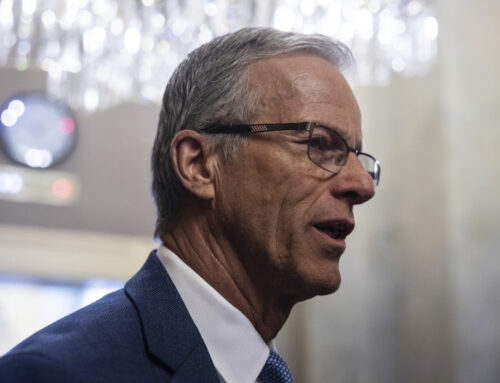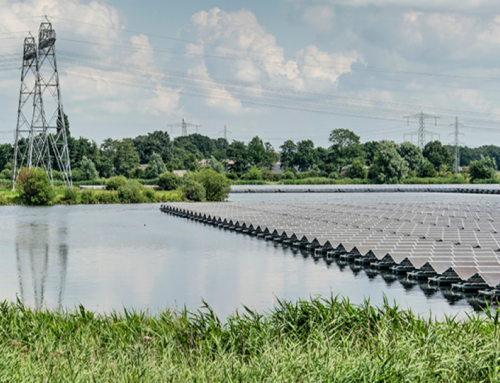Elizabeth River Project founder reflects on three decades of environmental advocacy
January 3, 2025
The Elizabeth River Project’s new headquarters on Colley Avenue in Norfolk cost more than $8 million and has drawn national attention for its unique legal commitment to retreat when sea levels rise.
But three decades ago, the nonprofit was no more than an idea in the mind of then-Virginian-Pilot reporter Marjorie Mayfield Jackson.
Since then, the organization has grown into a powerful player in Hampton Roads conservation.
Mayfield Jackson is now stepping down as its longtime leader. WHRO recently spoke with her about her legacy and hopes for the future of the river.
This interview has been edited for length and clarity.
WHRO: Tell me why you wanted to start the Elizabeth River Project 33 years ago and how it came together.
Marjorie Mayfield Jackson: I lived on a beautiful part of the river, Scott’s Creek in Portsmouth, and it was a source of solace and this really special spot to me. There were fish jumping and herons roosting in my mulberry tree. But the reports were coming out at the time about cancer in the fish in the Elizabeth River and other parts of the river, people seemed to have written off as dead.
I was 35 years old at the time, and I had been a newspaper reporter most of my adult life, where it seems like you’re more on the sidelines of the world, observing and reporting what other people do. But at that point in my life I wanted to get more directly involved and I decided what would make a difference to me was to see if I could talk to anybody else about getting the community involved to clean up the Elizabeth River. And so I quit my job at the paper and waited tables at night and started the Elizabeth River Project in the daytime with a very small group of gung ho volunteers. And it’s been quite a journey.
WHRO: How did you set about making real change?
MMJ: At the time, the EPA listed (the Elizabeth) as one of the three most toxic tributaries on the Chesapeake Bay. People considered it almost a joke. It was on “Seinfeld” as a joke. The scientists were having contests over who could catch the most deformed fish. People didn’t really think there was any hope. So the first and greatest task was to discover hope.
We consider ourselves a catalyst. So we try to catalyze action by many other partners, often much larger and more capable than us, whether it’s some of the very large industries up and down the Elizabeth River — it’s one of the most industrialized rivers in America — the Navy, which is currently doing a tremendous job, to government agencies, cities, homeowners, schools and kids. So it really takes everybody doing their part over decades to restore an urban river.
We take a collaborative approach that’s unusual for nonprofits in the environmental arena, where we don’t blame or sue. We really invite everybody to the table to do their part and reward them as “River Stars” when they do. It’s really been very important from day one that we are about pulling together and not blaming and pointing fingers.

Photo by Katherine Hafner
WHRO: What would you consider your biggest successes over the years, and what challenges remain?
MMJ: The science from the beginning was that there’s a legacy of pollution on the bottom of the Elizabeth River that needed to come up. It’s sort of a hidden problem, because it’s a legacy of old creosote plants that no longer operate, and you can’t see the contamination on the bottom of the river where it’s causing cancer in fish. People thought, “Well you can’t see it, it’s so expensive to get up, we’ll never get it up.” So we started a campaign called the “Goo Must Go.” And we have schoolchildren that know that slogan, we have legislators, mayors. And we’ve been able to clean up about half the toxic hotspots.
The third phase of cleaning up Money Point in Chesapeake is underway now with our partners at the Army Corps of Engineers. So I think that has been really important and has built a great start on the long term work that needs to be done. There’s still more sites to go, but where we have been able to bring about that cleanup, the river comes back tremendously with otters and eagles and a much healthier ecosystem.
For the first several decades, the work was really about correcting past damages: cleaning up the contamination, restoring the wetlands, restoring the wildlife habitat. But this Ryan Resilience Lab that we’re sitting in today is about looking into the future at the impacts that are coming from global climate change and sea level rise. Here in Norfolk, we’re the epicenter, so we wanted to inspire hope and so that’s why we built this facility where we can introduce people to healthy shoreline, to the beauty and wonder of native plants and wetlands and bring in great speakers and engage people in community science, and also introduce people to the best practices for living and working in the urban floodplain as the seas rise. It’s quite a wonderful place to engage the community in ways that we never imagined in the beginning.

Photo by Katherine Hafner
WHRO: How do you feel about stepping down as head of the organization?
MMJ: I have mixed emotions. I chose this time because it seems like there is such incredible momentum and such a wonderful global-class facility here to welcome a new person to lead. On the other hand, I don’t love the river any less. I’m just hoping that this is a handoff at the right time for an even better future for the Elizabeth. I don’t think this community is likely to forget about or neglect the Elizabeth River anytime soon.
Search
RECENT PRESS RELEASES
Related Post



